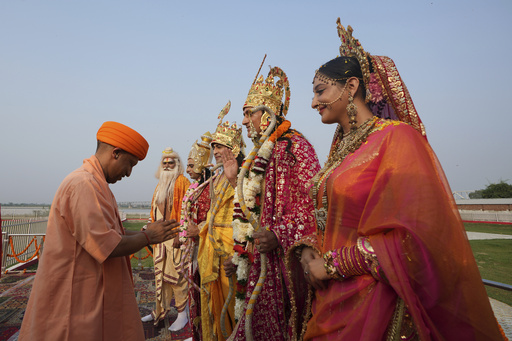
Diwali, known as the most significant festival in India, holds particular importance for Hindus but is celebrated by various faiths across the globe. With over a billion participants, the festival is marked by vibrant gatherings, dazzling fireworks, grand feasts, and heartfelt prayers, spanning five days of joyous festivities.
Derived from the term “Deepavali,” which translates to “a row of lights,” Diwali signifies the triumph of light over darkness and knowledge over ignorance. During the celebrations, individuals illuminate their homes with traditional clay oil lamps, creating beautiful displays of light.
When does Diwali occur? The festival’s timing is determined by the Hindu lunar calendar and generally takes place in late October or early November. In 2023, Diwali will be observed on October 31 and November 1. Notably, this year, the observance coincides with Halloween in the United States, sparking a wave of playful memes on social media, showcasing people lighting diyas while in costume or sharing sweets with trick-or-treaters.
What are the stories behind Diwali in Hindu tradition? While Diwali is predominantly celebrated by Hindus, it is also observed by Sikhs, Jains, and Buddhists. The narratives surrounding the festival vary across regions but share a common theme of the victory of good over evil. In southern India, Diwali commemorates the defeat of the demon Naraka by Lord Krishna, who liberated captive women and freed his subjects from his tyranny. Conversely, the northern regions honor Lord Rama’s return to his kingdom with his wife Sita and brother Lakshmana after a prolonged exile of 14 years.
How is Diwali celebrated? The customs associated with the festival vary by location, yet they all emphasize the significance of lights, fireworks, communal feasting, attire, and religious offerings. In southern India, many start the day with a warm oil bath, a ritual symbolizing spiritual and physical purification akin to bathing in the holy River Ganges. Meanwhile, in northern India, the worship of Goddess Lakshmi, representing wealth and prosperity, takes center stage.
Gambling on the night of Diwali is a cherished tradition believed to ensure fortune for the entire year ahead. On the inaugural day of Diwali, known as Dhanteras, individuals purchase gold to invite good luck into their lives. Fireworks and the exchange of sweets and gifts among family and friends are also integral to the celebrations. Rangoli designs, which are intricate patterns made with vibrant powders, are commonly seen during the festivities. However, in 2023, certain northern Indian states, including the capital, New Delhi, have implemented fireworks bans to address ongoing pollution issues during Diwali.
Diwali holds distinct meanings for other faiths as well. Jains observe the festival as a time to honor Lord Mahavira, the last great teacher, who achieved nirvana, marking liberation from the cycle of existence. Sikhs celebrate Bandi Chhor Divas on the same day to remember the release of Guru Hargobind, a prominent leader who was imprisoned for twelve years. Buddhists commemorate this day as the moment when Emperor Ashoka, a significant ruler from the third century B.C., embraced Buddhism.
In 2024, a new addition to the Diwali celebrations is the “Barbie Signature Diwali Doll,” designed by Anita Dongre. She describes her creation as representing contemporary women who proudly showcase their Indian heritage. Unlike earlier versions, which included bright pink saris or whimsical packaging, this year’s doll features a stylish lehenga, an ankle-length embroidered skirt, accompanied by a cropped blouse and vest, reflecting motifs from Rajasthan, Dongre’s native state. Priced at $40, this special edition sold out on its release day on Mattel’s website.
